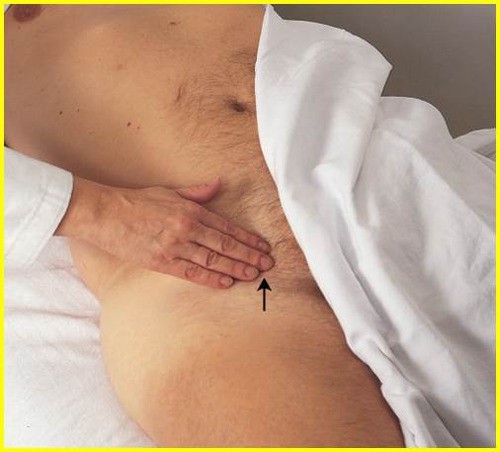A nurse is caring for an infant who has coarctation of the aorta.
Which of the following should the nurse identify as an expected finding?
Frequent nosebleeds
Upper extremity hypotension
Weak femoral pulses.
Increased intracranial pressure
The Correct Answer is C

This is because coarctation of the aorta is a congenital condition where the aorta is narrow, usually in the area where the ductus arteriosus inserts. This causes a decrease in blood flow to the lower body, resulting in weak or absent pulses in the femoral arteries.
The other choices are incorrect for the following reasons:
- Choice A, frequent nosebleeds, is not a typical sign of coarctation of the aorta.
Nosebleeds can be caused by many factors, such as dry air, allergies, trauma, or bleeding disorders.
- Choice B, upper extremity hypotension, is also not a common finding in coarctation of the aorta. In fact, patients with this condition may have high blood pressure in the upper extremities due to the increased resistance of the narrowed aorta.
- Choice D, increased intracranial pressure, is not directly related to coarctation of the aorta.
Increased intracranial pressure can be caused by various conditions that affect the brain, such as head injury, stroke, infection, or tumor.
Normal ranges for blood pressure and pulse vary depending on age, sex, and health status.
However, some general guidelines are:
- Blood pressure: less than 120/80 mmHg for adults; less than 95/65 mmHg for infants.
- Pulse: 60 to 100 beats per minute for adults; 100 to 160 beats per minute for infants.
Nursing Test Bank
Naxlex Comprehensive Predictor Exams
Related Questions
Correct Answer is A
Explanation
The correct answer is choice A. “The more my baby is at the breast sucking, the more milk I will produce.” This statement indicates an understanding of the teaching because it reflects the principle of supply and demand in breastfeeding. The more the baby stimulates the breast, the more milk the mother will produce.
Choice B is wrong because manually expressing milk will not decrease the milk supply. In fact, it can help increase the milk supply by removing more milk from the breast and signaling the body to make more.
Choice C is wrong because the breast is not emptied after 5 to 10 minutes of feeding. The baby should be allowed to nurse until they are satisfied and show signs of fullness, such as releasing the nipple, falling asleep, or turning away from the breast. The average duration of a feeding session can vary from 10 to 45 minutes.
Choice D is wrong because the baby should not always start on the same breast when feeding. The mother should alternate which breast she offers first to ensure both breasts are stimulated and drained equally.
This can help prevent engorgement, mastitis, and low milk supply. A simple way to remember which breast to start with is to wear a bracelet or a clip on the bra strap on the side that needs to be offered next.
Correct Answer is B
Explanation
The correct answer is choice B, bradypnea. Bradypnea is abnormally slow breathing, which can be a sign of life-threatening respiratory depression caused by morphine. Respiratory depression is the most serious adverse effect of morphine and can lead to coma and death if not treated promptly. Therefore, the nurse should monitor the child’s respiratory rate and oxygen saturation closely and be prepared to administer naloxone, an opioid antagonist, if needed.
Choice A, euphoria, is wrong because euphoria is a feeling of intense happiness or well-being that is a common side effect of morphine.
Euphoria is not a priority finding and does not indicate a serious complication of morphine.
Choice C, constipation, is wrong because constipation is a common and chronic side effect of morphine that affects the gastrointestinal system.
Constipation can cause discomfort and complications such as bowel obstruction, but it is not a priority finding compared to respiratory depression.
Choice D, sedation, is wrong because sedation is another common side effect of morphine that affects the central nervous system.
Sedation can impair the child’s level of consciousness and ability to respond to stimuli, but it is not as urgent as respiratory depression.
Whether you are a student looking to ace your exams or a practicing nurse seeking to enhance your expertise , our nursing education contents will empower you with the confidence and competence to make a difference in the lives of patients and become a respected leader in the healthcare field.
Visit Naxlex, invest in your future and unlock endless possibilities with our unparalleled nursing education contents today
Report Wrong Answer on the Current Question
Do you disagree with the answer? If yes, what is your expected answer? Explain.
Kindly be descriptive with the issue you are facing.
